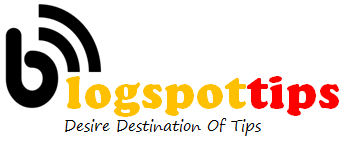
In late November 2024, a once-in-a-decade windstorm caused extensive damage throughout Issaquah, Washington. The bomb cyclone damaged homes and businesses, caused road closures throughout the city due to fallen trees and scattered debris, and left thousands without power for days. The City of Issaquah needed to come up with new ideas in order to meet the needs of the community. They opened multiple resiliency hubs to provide residents with food, showers, chargers, and connections to resources; they even invited local vendors to a mobile food truck rodeo as part of the response efforts. Their communications team relied on clear and compassionate posts to build trust and provide leadership. They made use of social media to post updates and tell stories about the people who were working on the recovery, with the goal of bringing the community together after the disaster. We asked Thomas Rush, Communications Manager for the City of Issaquah, to talk more about this experience and offer social governments advice on how to prepare for an emergency in honor of National Preparedness Month. Connect with him on LinkedIn and read his responses to our seven questions to learn about his personal journey, his go bag, and the response effort that received the 2025 Golden Post Award for Best Use of Social Media in an Emergency.
Describe yourself in 200 characters or less
A soccer and travel enthusiast who is fortunate to have a career in public service where I can contribute to the improvement of communities. Anecdotes about the significance of density, public transportation, and walkability have been known to annoy friends and family alike. Tell us about your journey with socialgov. I decided early in my career that I wanted to experience government at every level. Stops included the U.S. Consulate in Cape Town, South Africa and shaping messaging as a public affairs specialist for the State of Oregon. Along the way, I discovered my passion was at the local government level, specifically here in Issaquah—where I can see firsthand how my work strengthens community connections and makes a tangible difference for residents.
If we were coming to visit you in your town/city/state, what is your favorite thing we should see or do?
Issaquah, WA is so fortunate to be surrounded by natural beauty. I’ll make a strong case for you to hike the trails in the Issaquah Alps to see a beautiful view. If you forgot your hiking boots, that’s okay. The Pacific Northwest has something for everyone. I like to send visitors to the Seattle waterfront to grab a bite to eat and then hop on a ferry to crisscross Puget Sound where the views are spectacular and you may even be fortunate enough to spot a sea lion, orca, or humpback whale.
Where do you get your creative ideas and inspiration?
Though clichéd, it really comes from everywhere. This could be the random things I come across while browsing the internet, conversations about what has come up in my friend groups, or simply the things my peers make that are currently trending in the world. The work really starts when you take those jolts of inspiration and find ways to make it resonate within your community. That requires a creative team with a thorough comprehension of how to tailor it to the interests of your target audience. Not everything will land as well as you hoped, but learn from each idea and stay open to being creative.
What is in your socialgov go bag/emergency kit?
As the Communications Manager, my responsibilities shift during an emergency to being the City’s Public Information Officer and working with the Incident Commander to coordinate response. A few times a year, I get to practice making my go bag. Boots, a waterproof jacket, a medical kit, and other common emergency supplies are all contained in it. You’ll also find the digital tools—laptop, cell phone, camera, Go-Pro, and enough charging cables and batteries to create an impressive modern art display. I try to get it if I think it could help me help other people during a disaster.
What social/communication wins and areas of improvement came from the windstorm emergency?
As a team, we learned a lot during the bomb cyclone event in November 2024. Power outages lasted for a long time, affected travel routes, and damaged homes and businesses in our community. As forecasts began to worsen and we escalated from cautionary messaging to disaster response, we stayed in constant contact with first responders and city leadership to share information with impacted residents.
Following the storm we saw an opportunity to branch out and experiment with communications mediums during the initial recovery phase. We did stand-up interviews with the Mayor and staff in the field, created on-demand resource sheets for frequently asked questions on social media, and captured images to tell an important story as a team. We did our best to let the community focus less on the state of the city and more on their families and neighbors, despite the fact that not everything we tried worked perfectly. I was proud of the enormous efforts made by the city staff, however.
What is your best piece of advice for fellow socialgovs facing an emergency?
Practice. Build rapport with your coworkers and team members. If you are ever in a position where emergency communications are required, you’ll be thankful for the drills, the scenarios, and the exercises you’ve done in the past to give yourself the chance to talk through what you’ll do and what you should say to your community during a disaster. You won’t be able to plan for every variable or situation. But if you practice, there will be more moments to build your confidence, which will come through in how you communicate with your audience.
